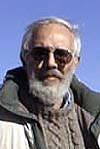 Alongside the ExtraOrdinary Technology Conference hosted by Tesla Tech, this year’s Natural Philosophy Alliance (NPA) Conference will have a variety of speakers on the philosophy of science as it broadens the boundaries of conventional thinking when they meet July 25-28 in Albuquerque, New Mexico, U.S. The scheduled list of speakers is here.
Alongside the ExtraOrdinary Technology Conference hosted by Tesla Tech, this year’s Natural Philosophy Alliance (NPA) Conference will have a variety of speakers on the philosophy of science as it broadens the boundaries of conventional thinking when they meet July 25-28 in Albuquerque, New Mexico, U.S. The scheduled list of speakers is here.
 The 2012 John Chappell Memorial Paper is “What Is Cold Fusion and Why Should You Care?” to be presented Friday, July 27 by NPA-member Dr. Edmund Storms, a veteran cold fusion researcher based in Santa Fe, New Mexico who recently released the paper with co-author Brian Scanlan. [source] A text is posted on the NPA website here.
The 2012 John Chappell Memorial Paper is “What Is Cold Fusion and Why Should You Care?” to be presented Friday, July 27 by NPA-member Dr. Edmund Storms, a veteran cold fusion researcher based in Santa Fe, New Mexico who recently released the paper with co-author Brian Scanlan. [source] A text is posted on the NPA website here.
Storms has recently presented a new idea naming the nuclear active environment (NAE) as a crack or fissure between atoms near the surface of the metallic lattice hosting the cold fusion reaction, also called low-energy nuclear reaction (LENR). The idea is described in the paper “Explaining LENR“, soon-to-be published in the forthcoming Journal of Condensed Matter Nuclear Science Vol. 9. The unassuming title belies a heap of paradigm-changing notions as Storms narrows the possibilities for modeling the cold fusion reaction by using experimental results to exclude contemporary theories that do not uphold the twenty-three years of empirical data. [.pdf]
Formulated after a complete survey of the field, his recipe for the NAE derives from the commonalities of all observable data from over two decades of experiments. Unusual topologies are a feature of each cell design that successfully measured excess heat or nuclear products.

In naming the NAE, Storms does not hypothesize on the nature of the nuclear mechanism, only that resonance turns it on. His goal is to give a recipe to start the reaction on-demand, so experiments and commercial products can be designed optimally, as opposed to the hit-or-miss successes so far.
When a definitive how-to for creating the cold fusion reaction is eventually published, the world will have the opportunity for a new age of green energy technology utilizing optimally designed generators that unlock the clean and safe power inherent in the fusion of hydrogen from water, causing a transformation of human culture far greater than even the digital revolution.

Peter Gluck, a long-time researcher in the field, asked Storms to respond to questions about his new idea and Cold Fusion Now posted their exchange here.
Currently, Storms is testing the recipe for creating the NAE at Kiva Labs in Santa Fe, with encouraging results. He will continue to test the hypothesis throughout the year, seeing if he can generate the effect on-demand, the determining factor in whether the idea has merit or not.
Cold Fusion Now’s Ruby Carat will attend the NPA conference to video Storms’ presentation and interview him afterwards about his research.
The NPA conference will be held at the Marriott Pyramid North in Albuquerque, NM alongside the ExtraOrdinary Technology Conference hosted by TeslaTech. More information about this particular event can be found at their site here.
Related Links
19th Natural Philosophy Alliance Conference Home
What is Cold Fusion and Why Should You Care? by Edmund Storms and Brian Scanlan [.pdf] An earlier version of the paper was published by Cold Fusion Now in March here.
Explaining LENR by Edmund Storms soon-to-be published by Journal of Condensed Matter Nuclear Science Vol. 9 2012 pre-print [.pdf]
Journal of Condensed Matter Nuclear Science Publications
Explaining LENR: Answering Peter Gluck posted by Ruby Carat June 11, 2012
2012 ExtraOrdinary Technology Conference sponsored by TeslaTech Home

Well done Ruby. I am so jealous.
Looking at the list of topics I see a lot of interesting talks. I thought that Einstein’s explanation of the Mickelson Morley experiment had buried all notions of the Ether.
It is good to see it revived.
And on to Gravity. There is something seriously amiss about mass and gravity. We shall have to wait for Lisa Randall to digest the affirmation of the Higgs, although I for one do not have a intuitive grasp on how the Higgs can create inertia, or bend space-time.
I remember Feynmann getting quite tetchy when quizzed about the magnetic field. There is just so much that this ape brushes under the carpet.
And this might interest Cold Fusion scientists. Neutrons escaping into a parallel world.
http://www.springerlink.com/content/h68g501352t57011/?MUD=MP